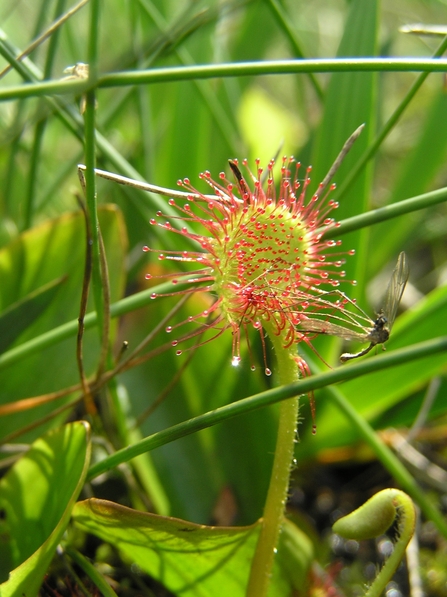With the lock-down extended in a grim situation that touches everyone in myriad ways, the words of Octavia Hill, social reformer and co-founder of the National Trust ring so true: ‘the need of quiet, the need of air, the need of exercise and, I believe, the sight of sky and of things growing, seem human needs, common to all and not to be dispensed with without great loss.’ Many of us are missing the heathlands, the walks, volunteering, training and surveying, all suspended. Essential care of the animals continues and local walkers are keeping gates shut.
We can all take small steps to protect wildlife in our gardens; cut out the chemicals that kill the goodies, the birds who eat the poisoned baddies, use peat-free compost, allow hedge garlic for orange tips, herb Robert, teazels for goldfinches, nettles for peacock butterflies, ivy for holly blues, long grass and dandelions for many insects, the food of all nestling birds. Wild and untidy doesn’t mean bad but rather a haven for wildlife, some of which, like dormice, will not emerge from hibernation until May. Kent Wildlife Trust’s Facebook page provides informative daily photos and ideas of how you can still engage with wildlife.
Visitors are still welcome to visit Hothfield Heathlands on foot as part of their daily exercise. We have taken most catches off gates so that you can open them without using your hands. Remember that there is still livestock on site so all gates still need to be left closed.
CARNIVOROUS PLANTS ON HOTHFIELD HEATHLANDS
My favourite plant (well for today anyway) on the Heathland will only become obvious from the chilly waters of the upper bog in May. The carnivorous round leaved sundew, Drosera rotundifolia, overwinters as a hibernaculum, a small globe of curled up leaves tucked into the sphagnum moss. As the water warms up a rosette of ground-hugging leaves unfurls to its full 2-inch width and gets to murderous work. Growing in acid nutrient-poor habitats, its small fibrous root system provides light anchorage but absorbs water, while green fleshy leaves, flower stems and sepals make food through photosynthesis; this is supplemented by the nitrogen-rich soup extracted from the dissolved bodies of insects that are captured by the extremely sensitive long-stalked sticky glands on the leaves. Sarah Raven, in her book Wild Flowers, states that up to 2,000 insects can be caught by one plant in a summer. That’s a lot of supply flights. Although small, the plants are easy to spot from the causeway, tiny patches of reddish green, singly or in glistening colonies. It’s worth using binoculars to observe the plants in detail.
From June through August a wiry stem uncoils from the centre of the rosette, bearing tiny white flowers of six petals all on the same side of the stem, apparently floating a few inches above the plants - the distance enabling pollinators to reach the flowers and avoid the traps below. The flowers open successively, and in poor weather (think Scotland) flowers remain closed and can self-pollinate. The flower stem hardens and the seed capsule persists in autumn as the plant curls back into a hibernaculum. The seeds need a cold winter – stratification – to promote germination.
The common name sundew describes the plants’ appearance, every leaf filament is tipped with a drop of viscid liquid that glistens like dew in the sun, deceiving insects into thinking they are landing on water. Drosera is from the Greek, drosos = dew, dewdrops, rotundifolia describes the round leaves. The other native sundews are great sundew, Drosera anglica and oblong-leaved sundew Drosera intermedia, both scarce species.
They certainly have a rich history. Thomas Culpeper in his Complete Herbal of 1653 noted that ‘the hotter the sun shines, the moister they (the leaves) are’ and recommended using the juice of the leaf to destroy warts and corns. Richard Mabey in his Flora Britannia reports that herbalists promoted the liquid to preserve youth, strength, and vitality. Similarly, workers on the Lancashire peat carrs called it youth grass, and harvested it as a kind of catch crop. In Europe spices were added to make Ros Solis liquor to preserve youthful looks, strength and longevity. The plant’s ability to entrap made it a love charm and in 1968 youngsters stole bits from a specimen in Douglas Museum to put in the pockets of persons they fancied. The collectible 1958 Brooke Bond album of Wild Flowers Series 2, illustrated by Charles Tunnicliffe, includes cards of Drosera rotundifolia and butterwort.

